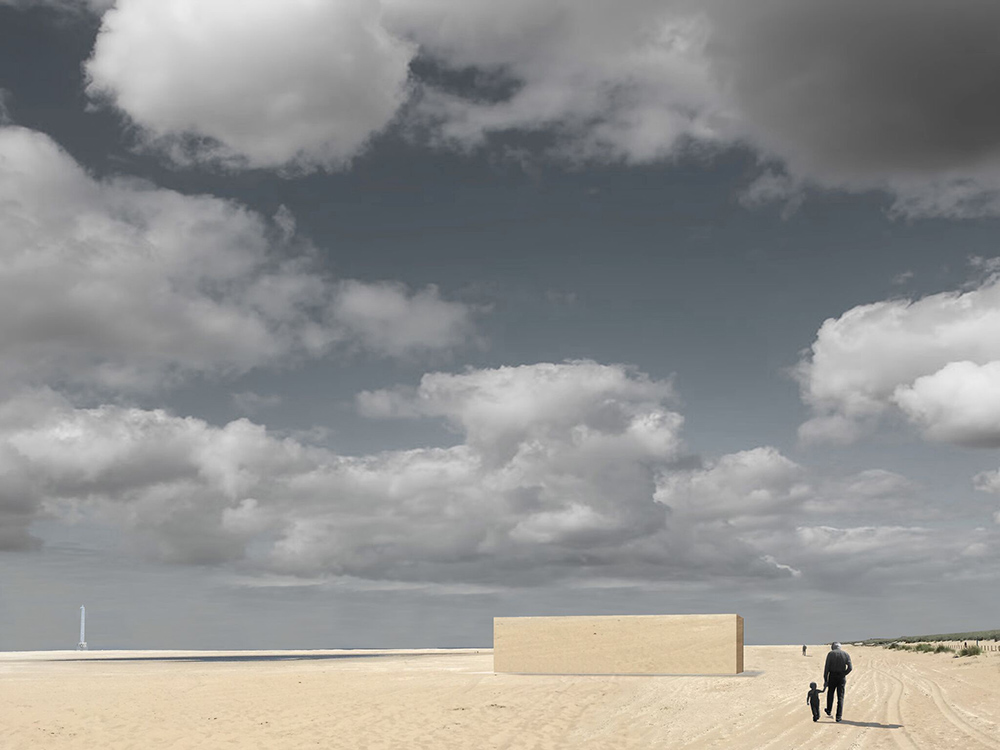The Sand Motor as source to rethink anthropogenic coastal modifications in cultural public space
Downloads
DOI:
https://doi.org/10.47982/rius.7.132Keywords:
art, polyphonic discourse, co-creation of experiential knowledge, vital learning environment, public climate-consciousnessAbstract
Now that people all around the world are slowly starting to rethink how humanity and the planet are interrelated, new questions have arisen around the understanding of time and the perception of place. It’s not merely a technical or a political challenge that we are facing, it is also a cultural one. The Sand Motor - as the first of its kind - uses the forces of the wind and waves as active agengies of change, but can it be valued as a driving force for humanity to change as well? Drawing from primary artistic research of the sea, coastal transitions, climate change and human appropriations in The Netherlands and abroad, we can state that the ephemeral nature of the Sand Motor itself challenges a polyphonic discourse for co-creation of experiential knowledge. The Sand Motor can be perceived as a man-made intervention in public space, an open-air, publicly accessible research site. Over the past 10 years, Satellietgroep redefined the Sand Motor as a cultural phenomenon, connecting the Sand Motor to the realms of art, culture, and heritage. This essay discusses a series of human-inclusive art projects, in which the Sand Motor evolves from a non-place into a vital learning environment for the cross-pollination of ideas and experimentations to rethink culture and nature. They demonstrate that pioneering with the Sand Motor should include pioneering with the social and cultural values of this artifact, not only to raise public and professional climate-consciousness, but also to adopt it as a human-inclusive landscape. This may well be the most underestimated value of the Sand Motor itself, and of the concept of Building with Nature in general.
How to Cite
Published
Issue
Section
References
Adviescommissie Zuid-Hollandse Kust. (2006). Kustboekje – groeien naar kwaliteit. Provincie Zuid-Holland.
Augé, M. (1992). Non-Places: An Introduction to Anthropology of Supermodernity. Le Seuil.
Couling, N. R., & Hein, C. M. (Eds.). (2020). The Urbanisation of the Sea: From Concepts and Analysis to Design. Nai010 Publishers. https://doi.org/10.7480/isbn.9789462085930
de Bie, W., Dekkers, W., Dorrestein, R., Huf, P. E. B., van Praag, M., Wolkers, J. (1997). Laat de kust met rust [Leave the coast in peace]. Bas Lubberhuizen.
Haasnoot, M. (2019). Plan Waterman - KustWikIdee - Deltares Public Wiki. Deltares. https://publicwiki.deltares.nl/display/KWI/1.2.1.1+Plan+Waterman
Mintern, S. (2011). The Sand Engine as a Productive Void. Discussing the Spatial Value and Public Appropriation of the Sand Engine. TU Delft
Neefjes, J. W. P. M., Bleumink, J. A., Spek, T. (2018). Landschapsbiografie Nationaal Park Hollandse Duinen. Rijksdienst voor het Cultureel Erfgoed, & Staatsbosbeheer.
Satellietgroep. (2007). S.MAG#1. Sea Magazine. https://issuu.com/jacquelineheerema/docs/s.mag__1
Satellietgroep. (2008). S.MAG#2. Sea Magazine.
Satellietgroep. (2013a). Badgast. Satellietgroep.
Satellietgroep. (2013b). Now Wakes the Sea. Satellietgroep. https://issuu.com/jacquelineheerema/docs/now_wakes_the_sea
Satellietgroep, Bosman, L. & Heerema, J. (2018). Who is nature? The Urbanisation of the Sea.
Satellietgroep & Heerema, J. (2019). Sand Motor a cultural phenomenon. In A. Luijendijk, & A. van Oudenhoven (Eds.), The Sand Motor: A Nature-Based Response to Climate Change: Findings and Reflections of the Interdisciplinary Research Program NatureCoast. Delft University Publishers.
Sijmons, D. (2015). Bewogen Beweging: Landschap onder de kap. TU Delft. http://www.hnsland.nl/media/filer_public/e2/4c/e24cc6ef-57fa-4c52-b8d6-5976858eedf2/bewogen_beweging_nl_def.pdf
van den Hoek, R. E., Brugnach, M., Mulder, J. P. M., & Hoekstra, A. Y. (2014). Uncovering the origin of ambiguity in nature-inclusive flood infrastructure projects. Ecology and Society, 19(2), 51. https://doi.org/10.5751/es-06416-190251
Vos, P. (2015). Origin of the Dutch coastal landscape: Long-term landscape evolution of the Netherlands during the Holocene, described and visualized in national, regional and local palaeogeographical map series. Barkhuis.





